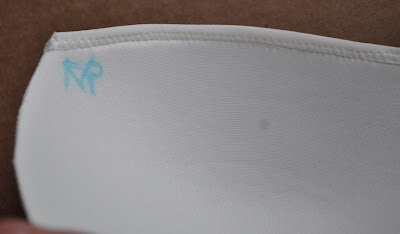This is the first post on making a balconet bra using pre-formed cups. I made a first bra in this way in a workshop at Kantje Boord (the famous lingerie notions shop in Amsterdam, Paula who gave the workshop did not mind my posting this). In this post I will describe the way the cup is covered with a stretch lace.
Just to give you an idea: this is my first bra with preformed cups:

For the bra in this and in following posts I used embroidered lace with a little bit of stretch. The basic color of the lace is the same as the cup, which makes there is no need for a separate layer under the lace for matching colors. That’s for another bra/post.
















This comment has been removed by a blog administrator.
ReplyDelete